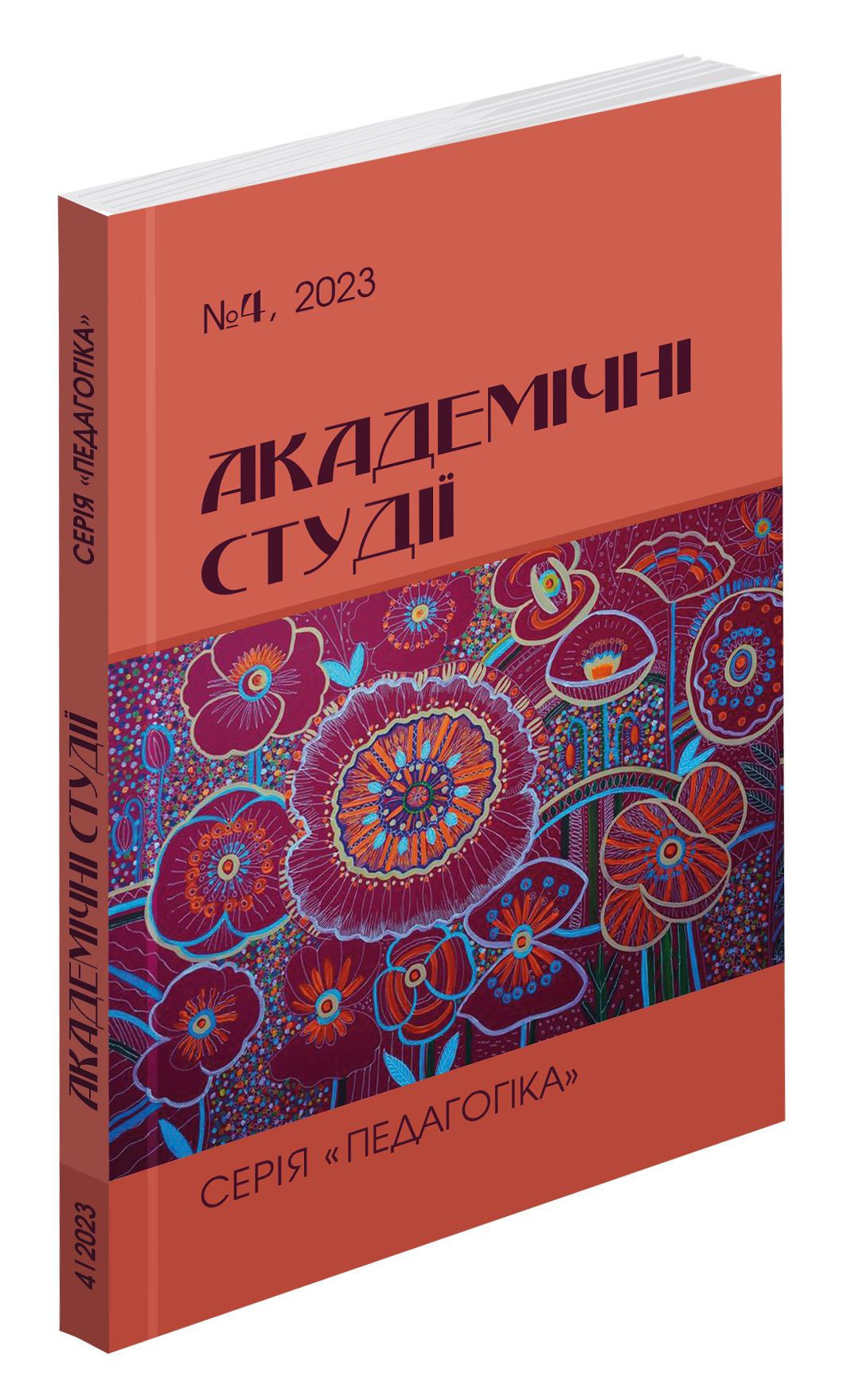Abstract
The article addresses the pressing issue of developing “soft skills” in graphic design students, considering the growing demand for creative and communicatively adept professionals in this field. It emphasizes that cultivating such skills is a necessary component of their professional training. Drawing from the Icograda Design Education Manifesto, where design is characterized as an activity encompassing intellectual, creative, strategic, managerial, and technical aspects, the article underscores the importance of shaping personal skills. It delves into researchers’ perspectives on material and immaterial, cognitive and non-cognitive, as well as “hard skills” and “soft skills” in the context of graphic design. The article notes the absence of a unified approach to defining the personal qualities necessary for a graphic design professional. It provides an analysis of industry standards, manifestos, educational standards, and national and international educational programs in China and the United Kingdom for training graphic design professionals regarding the specified skill requirements outlined in these documents. The results show that the skill requirements and personality traits of professionals are outlined in education standards and training programs. The article identifies specific “soft skills,” such as communicativeness, creativity, problem-solving, critical thinking, and time management, which contribute to successful work in the field of graphic design. It underscores the importance of cultivating these skills in the educational process. The specificity of the identified “soft skills” concerning graphic design is also examined. The article’s conclusion emphasizes the importance of “soft skills” in the professional training of future graphic designers and the need for further developments in this direction.
References
Design Council. (2020). Design perspectives: Design skills 2020. From https://www.designcouncil.org.uk/fileadmin/uploads/dc/Documents/Design%20Perspectives-%20Design%20Skills.pdf
Dubberly, H. (2011). Input for updating the icograda design education manifesto. In A. G. Bennett & O. Vulpinari (Ed.), Icograda design education manifesto 2011 (с. 77–81). From https://www.theicod.org/storage/app/media/resources/Icograda%20Documents/IcogradaEducationManifesto_2011.pdf
Hadiyanto, H., & Nofer, N. & Moehaimin. (2017). Assessing students and graduates soft skills, hard skills and
competitiveness people. In International Journal of Social Sciences. V. 3. doi:1885-1906. 10.20319/pijss.2017.32.18851906.
Hendarman, F., Cantner, U., & Hendarman, A. (2017). Soft skills, hard skills, and individual innovativeness. Eurasian Business Review, 8. doi:10.1007/s40821-017-0076-6.
Fan, C., Wei, Xiangdong & Zhang, Junsen. (2005). “Soft” Skills, “Hard” Skills, and the Black/White Earnings Gap. SSRN Electronic Journal. doi:10.2139/ssrn.827387.
Icograda design education manifesto 2011. (2011). In Icograda design education manifesto 2011. (p. 8–12). Villorba Italy: Grafiche Tintoretto. From https://www.theicod.org/storage/app/media/resources/Icograda%20Documents/IcogradaEducationManifesto_2011.pdf
Kunrath K., Cash P., & Li-Ying J. (2016) Designer’s identity: personal attributes and design skills. International design
conference – design 2016, Dubrovnik. 2016. P. 1729–1740. From https://www.researchgate.net/publication/303751399_
DESIGNER%27S_IDENTITY_PERSONAL_ATTRIBUTES_AND_DESIGN_SKILLS
Lopes, D., Correia, J., & Machado, P. (2022). EvoDesigner: Towards aiding creativity in graphic design. In Artificial
intelligence in music, sound, art and design lab. doi:10.1007/978-3-031-03789-4_11
Malouf D. (2011) Design Education for future In Icograda design education manifesto 2011. (p. 99–103).
Villorba Italy: Grafiche Tintoretto. From https://www.theicod.org/storage/app/media/resources/Icograda%20Documents/
IcogradaEducationManifesto_2011.pdf
Purbasari, M. & Carollina, D. (2023). Elementary Design: A form of Creative Thinking Implementation to Develop
Student Creativity. In Asian Journal of Education and Social Studies. P. 28-41. doi:10.9734/ajess/2023/v39i1837.
Rovida, E., Gianotti, A., & Zafferri, G. (2022). Soft Skills Teaching Proposal for “Designers”. In Advances on
Mechanics, Design Engineering and Manufacturing., IV (pp. 1541-1551) doi:10.1007/978-3-031-15928-2_134.
The Quality Assurance Agency for Higher Education. (2019). Subject benchmark statement for history of art,
architecture and design. From https://www.qaa.ac.uk/docs/qaa/subject-benchmark-statements/subject-benchmarkstatement-
history-of-art-architecture-and-design.pdf?sfvrsn=53e2cb81_5
University of Wales Trinity St. David – Wuhan University of Technology. (2013). BA(Hons) art and design programme document.
Vitchynkina, K. (2023). Analysis of skills requirements for graphic design professionals in higher education standards of Ukraine, China and the UK. In Spiritual and intellectual upbringing and teaching of youth in the XXI century. International periodical collection of scientific papers edited by V. P. Babych, O. M. Khvostychenko. Kharkiv: WSNOS. Issue 5. doi:10.58962/2708-4809.WSNOS.2023.66
World Economic Forum. (2018). The future of jobs report 2018. From https://www3.weforum.org/docs/WEF_
Future_of_Jobs_2018.pdf
Zeegen L. (2009-2011) What use design education? In Iridescent. V. 1. (p. 48-51) From https://www. theicod.org/storage/app/media/resources/Publications/Iridescent/Vol%201%20Issue%201/ICO_Publications_
Iridescent_V_1_1_2009-2011.pdf
Jiāo yù bù gāo děng xué xiào jiāo xué zhǐ dǎo wěi yuán huì biān [Compiled by the steering committee for teaching
higher education institutions of the Ministry of Education]. (2018). shù jù pǔ tōng gāo děng xué xiào běn kē zhuān yè lèi
jiāo xué zhì liàng guó jiā biāo zhǔn [National standards for the quality of vocational training at The Bachelor’s level in
ordinary higher educational institution] (xià cè [V.2]). gāo děng jiāo yù chū bǎn shè [Higher education publishing house].
Shì jiào chuán dá shè jì zhuān yè [Specialty Visual Communications Design]. (2017). In bǎn běn kē péi yǎng fāng
àn [Bachelor’s degree plan] (p. 23–33). wǔ hàn lǐ gōng dà xué [Wuhan University of technology].
Yáng liú [Yang Liu] (2020). jìsuànjī píngmiàn guǎnggào shèjì jiàoxué zhī tǐhuì [Experience of Computer print
advertising design teaching]. In xiàndài jiàoyù lùntán [Modern Education Forum]. V. 3(7) doi:10.32629/mef.v3i7.2588
Yīnlí míng [Yinli Ming] (2021) DI xuéxí fāng-ràng chuàngxīn sīwéi huódòng shēndù fāshēng [DI Learning
Workshop: Let innovative Thinking Activities happen in depth]. blob:https://www.ncpssd.org/18419db1-f713-4c88-a694-
a13b33a18928
